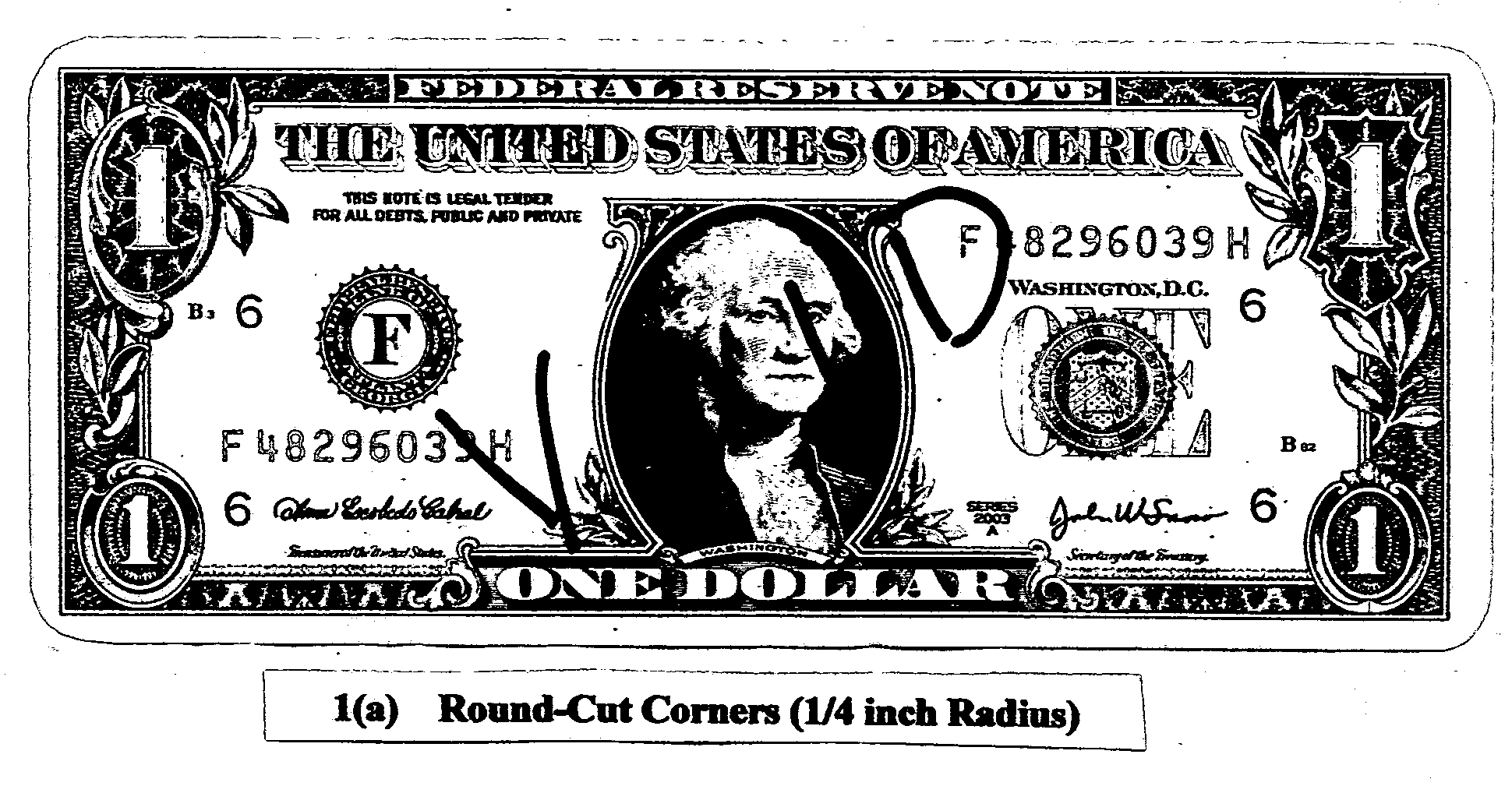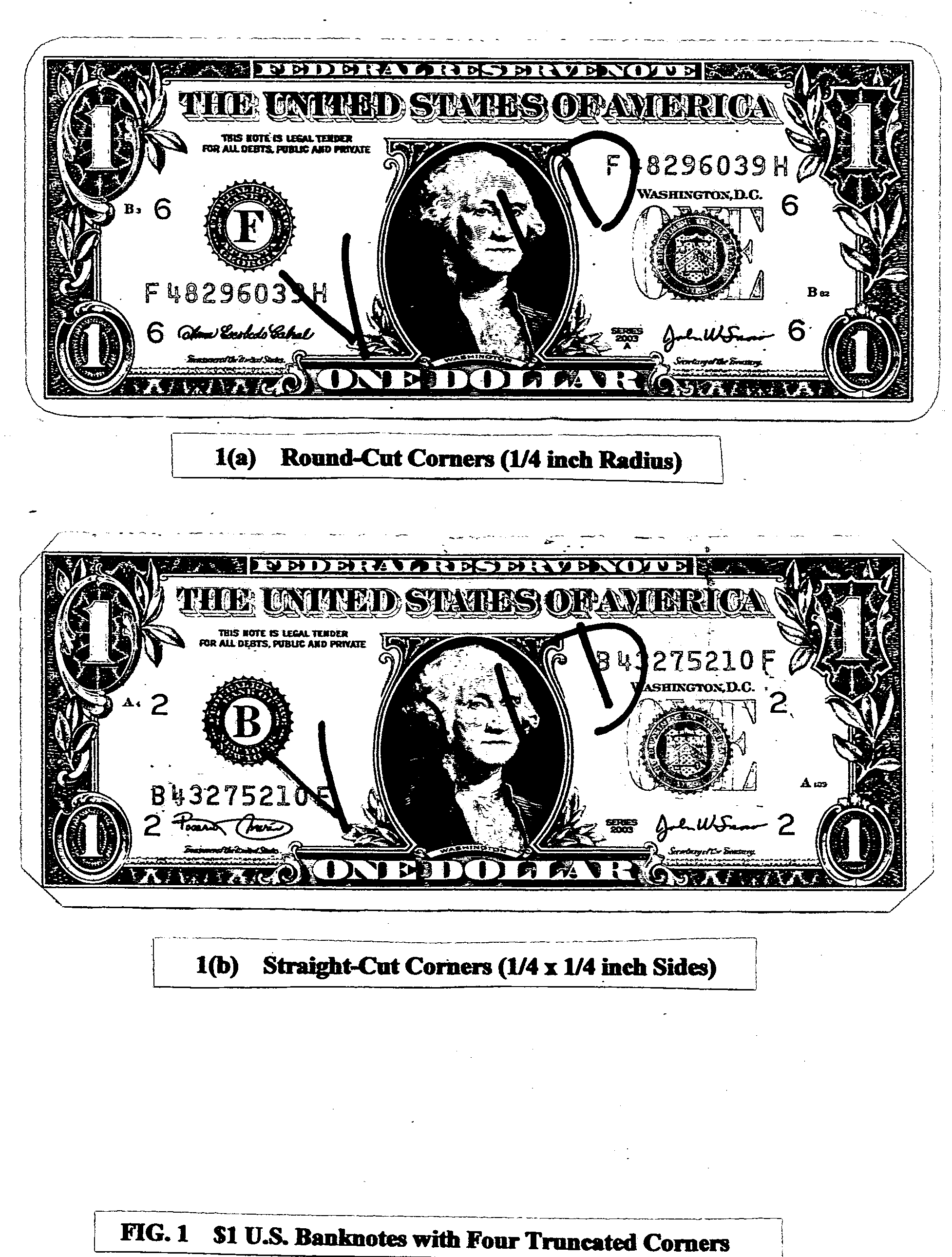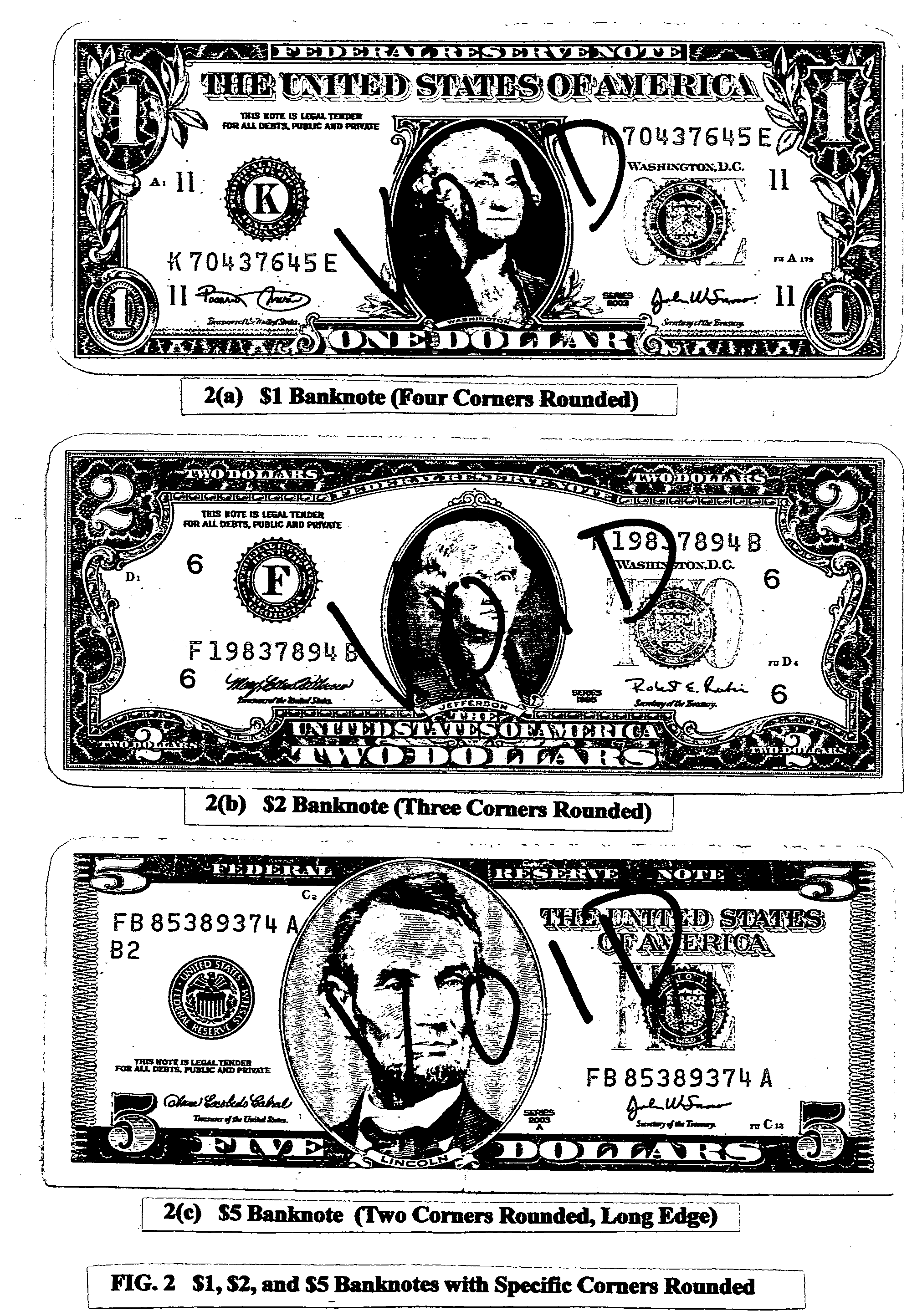System and method for making U.S. banknotes readable by visually-impaired persons
- Summary
- Abstract
- Description
- Claims
- Application Information
AI Technical Summary
Benefits of technology
Problems solved by technology
Method used
Image
Examples
Embodiment Construction
[0042]This invention consists of a simple method and system for making U.S. banknotes easily readable by all visually-impaired persons, without any assistance from a sighted person. The proposed method allows standard U.S. banknotes to be printed by the U.S. Bureau of Engraving and Printing exactly as is currently done, except for one simple modification. Each banknote denomination, from $1 through $50, shall have one or more of its corners truncated (herein called “clipped”) by removing a small rounded or straight-cut section from the corner, so that a visually-impaired person can hold the banknote in his / her hands in any orientation and easily distinguish by feel the number and location of its clipped corners, hence the denomination, of each banknote.
[0043]FIG. 1 illustrates $1 banknotes with their four corners clipped by ¼ inch radii round-cuts, 1(a); and straight-cuts having two ¼ inch sides, 1(b). Obviously, other variations of the corner cuts could also be used, such as non-ci...
PUM
| Property | Measurement | Unit |
|---|---|---|
| Size | aaaaa | aaaaa |
Abstract
Description
Claims
Application Information
 Login to View More
Login to View More - R&D
- Intellectual Property
- Life Sciences
- Materials
- Tech Scout
- Unparalleled Data Quality
- Higher Quality Content
- 60% Fewer Hallucinations
Browse by: Latest US Patents, China's latest patents, Technical Efficacy Thesaurus, Application Domain, Technology Topic, Popular Technical Reports.
© 2025 PatSnap. All rights reserved.Legal|Privacy policy|Modern Slavery Act Transparency Statement|Sitemap|About US| Contact US: help@patsnap.com



